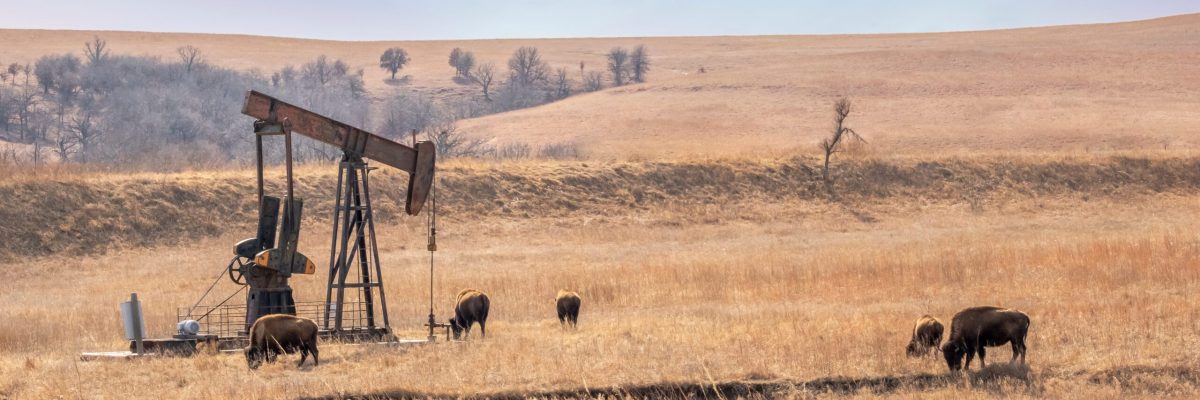Oil & Gas Security Interests:
From Lease to Pipeline
Why This Topic Demands Attention
Haynes Boone, in its Fall 2024 Borrowing Base Survey of energy lenders, found that more than 70% of reserve‑based credit lines now rely on production proceeds as the primary repayment source. In other words, collateral located thousands of feet underground has become the backbone of billions in financing. Understanding how security interests travel from the lease through the gathering system and into sale proceeds has never mattered more to producers, banks, or investors.
The Building Blocks of Oil & Gas Collateral
Oil and gas property rarely sits in a single package. A typical prospect begins with a mineral lease that grants a working interest to the operator and reserves a royalty to the landowner. As drilling costs climb, the operator often slices that working interest into farmout tracts, grants overriding royalties to investors, and layers on production payments tied to future barrels. By the time a lender arrives, the same well may support half a dozen distinct income streams, each with its own rules on whether it behaves like land or personal property.
Real‑Property Interests versus Personal‑Property Rights
Courts view oil and gas while still in the ground as part of the real estate. Once molecules reach the surface, they transform into personal property. This shift matters because liens on land follow real‑estate recording systems, while liens on personal property are perfected by centralized notice filings. What begins as a mortgage at the courthouse can later rely on separate filings to cover the tank battery, the pipeline tie‑in, and even the receivable owed by a refinery.
Common Revenue‑Based Interests
The financial stack around a producing well almost always includes royalties, overriding royalties, net‑profits interests, and production payments. Royalties persist for the life of the lease and bear no costs. Overriding royalties sit on top of the working interest and end when the lease expires. Net‑profits interests cash in only after expenses have been recovered. Production payments terminate once a specified volume or dollar figure has been delivered, making them popular with private‑equity backers who want predictable payouts.
How Security Interests Attach
Before Extraction
A lender that finances drilling typically records a mortgage or deed of trust covering the leasehold. That document reaches anything classified as real property, such as the right to produce hydrocarbons and fixtures permanently affixed to the well site. Because the collateral still lies underground, the claim must be recorded in each county where wells are located. Local filing protects the lender even when the borrower later assigns a slice of its working interest to a partner.
As‑Extracted Collateral
The moment oil or gas leaves the formation it becomes a different kind of collateral. Modern loan agreements solve the transition by adding language that grants a lien on production as it is lifted. Perfection rules then look to the county where the wellhead sits. Some states allow the original mortgage to double as notice for this personal‑property claim, while others require a second filing in a statewide registry. Counsel must check local practice because a single misfiled document can open the door for equipment lenders or trade creditors to jump the priority line.
Accounts and Proceeds
After production enters the pipeline, sales revenue typically flows through a purchasing company that issues monthly checks. A lender hoping to reach that cash claims a security interest in accounts receivable and general intangibles arising from production sales. Centralized filings cover the accounts, while deposit‑account control agreements direct purchasers to wire funds into pledged accounts. Timing is everything: if a rival creditor grabs the account first, the production lender’s real‑property lien may offer no protection once hydrocarbons leave the lease.
Priority Tangles and First‑Purchaser Rules
Energy‑producing states often hand mineral owners a special first‑priority lien on production proceeds. Oklahoma’s version follows the blueprint established in its Oil and Gas Owners’ Lien Act and gives each interest owner a lien that outranks later‑filed security interests. Texas and Kansas take similar approaches but differ on whether the lien is automatic or must be perfected by affidavit. These non‑uniform wrinkles tripped up several lenders in the SemCrude bankruptcy when upstream producers argued that their liens outranked bank syndicates. The lesson remains clear: priority can flip with a short statutory notice period if filings are not state‑specific.
Fixture Filings and Surface Equipment
Pump jacks, separators, and storage tanks blur the line between realty and goods. If the hardware is considered a fixture, the lender needs either a fixture filing in the county land records or language in the existing mortgage that covers fixtures. Many practitioners adopt a belt‑and‑suspenders approach: record the mortgage and a separate fixture filing, then supplement with a statewide notice that picks up any stray equipment relocated during workovers.
Beyond the Wellhead – The Full Collateral Package
Reserve‑based loans rarely stop at hydrocarbons and equipment. Contracts, seismic data, hedging positions, deposit accounts, and equity in subsidiary holding companies often round out the collateral. These assets carry lower borrowing‑base value yet become critical during restructuring, when a lien on hedge gains or a cash management account may fund operations while the rig count falls.
Intellectual Property and Data
Shale drilling relies on proprietary algorithms and geological models, but resale value is limited. Lenders file blanket liens all the same, both to deter competing claims and to secure any upside if software or trade secrets become marketable. The policy mirrors regulatory guidance from the Office of the Comptroller of the Currency, which encourages banks to document all available collateral even when appraised value is modest.
Production‑Based Financing Trends
Reserve‑based facilities remain the dominant model for U.S. independent producers. However, analysts at Akin Gump report a widening spread between banks willing to underwrite new borrowing bases and producers seeking funds for drilling programs. As commodity prices whipsaw, lenders lean more heavily on engineering redeterminations and protect margins by demanding comprehensive lien coverage that captures proceeds, hedge settlements, and midstream contracts.
Bankruptcy Flashpoints
Competing liens surface quickly when a distressed producer files for protection. Cases stemming from the SemCrude collapse illustrate how first‑purchaser statutes, flawed filings, and unrecorded assignments can reorder priorities overnight. Courts often examine whether proceeds trace directly to the original production lien and whether intermediary purchasers qualify as buyers in the ordinary course. Properly drafted security agreements anticipate these arguments by extending liens to identifiable proceeds, future accounts, and replacements.
Oklahoma Focus
First‑Priority Owners’ Lien
Oklahoma (and as of 2022, Texas) grants royalty and working‑interest owners an automatically perfected lien that follows oil and gas into the hands of the first purchaser. The lien functions much like a purchase‑money security interest, jumping to the front of the line should the purchaser fail to remit payment. Any lender financing a gathering system or downstream processor must therefore confirm that proceeds have cleared payments owed to upstream owners before claiming cash collateral.
Recording Practice and County Registers
Most Oklahoma counties index both mortgages and production liens under legal descriptions rather than debtor names. That format reduces filing errors but can complicate multistate deals when outside counsel assumes name‑based searches suffice. The Oklahoma Corporation Commission maintains an online data portal that lists well files and ownership changes public database, offering lenders a supplementary check on title chains.
Economic Backdrop
Oklahoma added more than $2 billion in new drilling permits in 2024, marking its strongest permitting year since the shale boom. This growth is likely attributed to deeper Springer and Woodford targets, according to a report by the Oil and Gas Conservation Division of the Oklahoma Corporation Commission. This higher activity boosts demand for drilling loans, service‑company working capital, and midstream construction financing, all of which depend on precise collateral descriptions that match local filing rules.
Best Practices for Lenders and Investors
- Confirm whether each interest behaves like real property or personal property before drafting collateral schedules.
- Record mortgages in every county where wells lie, then layer statewide notices for proceeds and equipment.
- Review state‑specific “first purchaser” statutes and automatically perfected liens that may outrank institutional lenders.
- Use dual‑purpose forms when possible so a single document captures both real‑property and personal‑property collateral.
- Monitor filings at least annually, especially after acreage trades, farmouts, or re‑completions alter the ownership stack.
Key Takeaways
- Oil and gas collateral shifts character the moment it leaves the ground, requiring layered perfection strategies.
- Priority battles often hinge on state‑specific liens that protect mineral owners ahead of traditional secured lenders.
- Reserve‑based credit relies on accurate engineering reports, but the legal foundation remains meticulous filing and title diligence.
- Oklahoma’s automatically perfected owners’ lien and county‑based indexing system create unique hurdles and safeguards.
- Early coordination among landmen, engineers, and counsel prevents surprises when commodity prices tighten and workouts loom.
Legal Disclaimer: This article provides general information and does not constitute legal advice. Reading it does not create an attorney‑client relationship with Cantrell Law Firm. Collateral rules vary by jurisdiction and factual setting. Professional counsel should be consulted before relying on any strategy discussed here.
For guidance on oil & gas collateral matters or assitance with oil & gas title examinations, contact Cantrell Law Firm for a free consultation.





